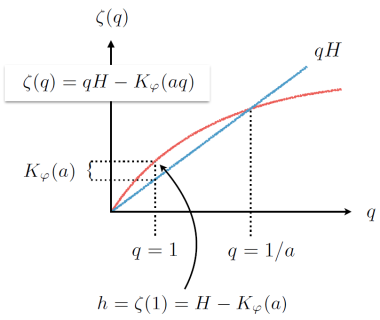Theoretical estimation
The different methods to estimation the UM parameters described above can be applied to a conservative field or flux (see Multiscale Analysis : Multfractal courses). However, directly observable quantities are rather the (vector) velocity field of temperature field which are a non-conservative quantities. Kolmogorov in [ Kolmogorov, 1941[1]] proposed to characterize these processes by the analysis of their spatial/ or temporal increments. The statistical moments (in space) of these increments are the structure functions, defined by:


Where the scalar field
 can be a passive scalar field (temperature), or one component of the velocity field.
can be a passive scalar field (temperature), or one component of the velocity field.
 is the smallest resolution
is the smallest resolution
 ,
,
 is the scaling exponent of the structure function. Using the dimensional analysis the increments of the field
is the scaling exponent of the structure function. Using the dimensional analysis the increments of the field
 has been related to those of related flux density
has been related to those of related flux density
 :
:
Using the above relation, the structure function scaling exponent can be expressed in the framework of UM as :
The UM parameters can be calculated as follow :






